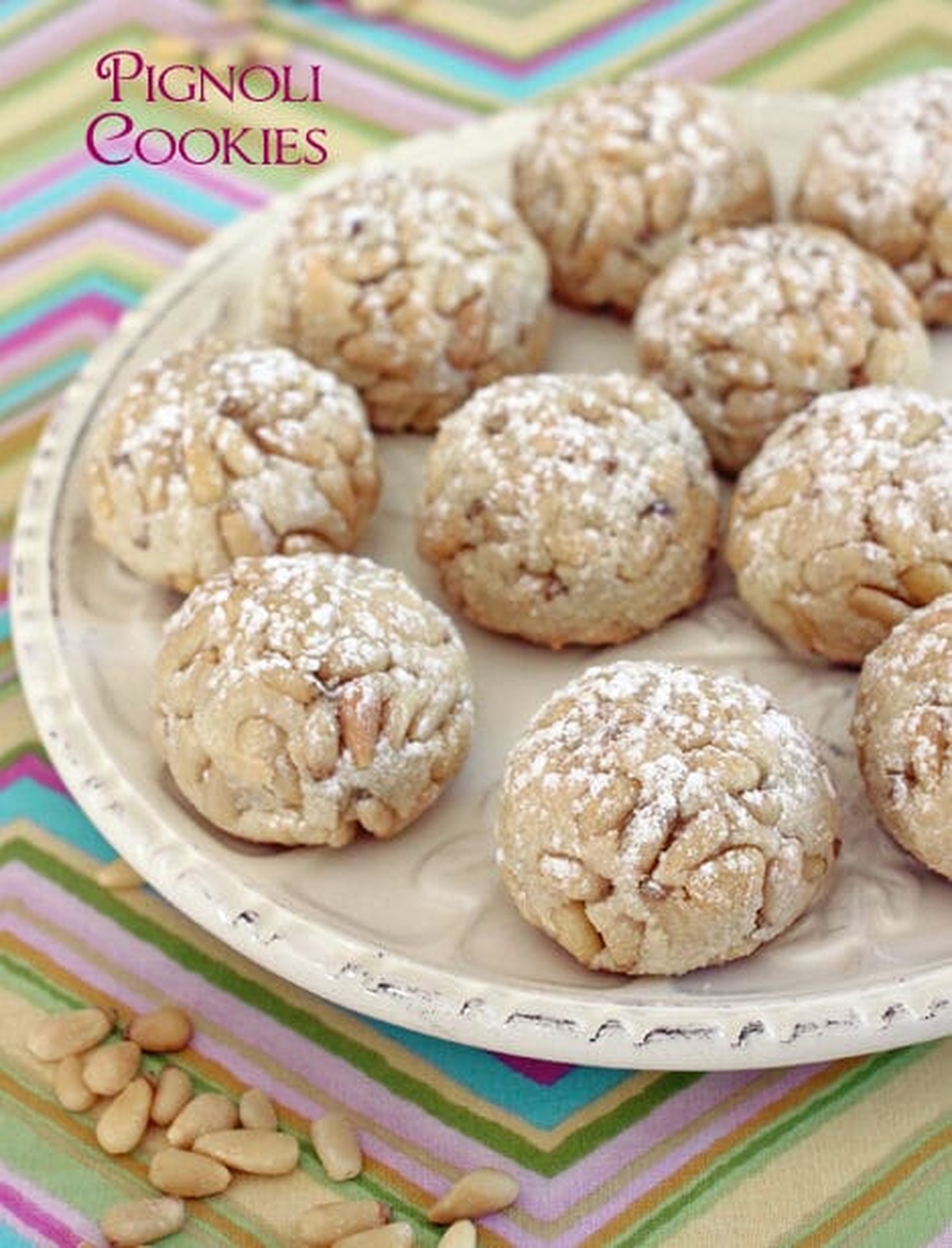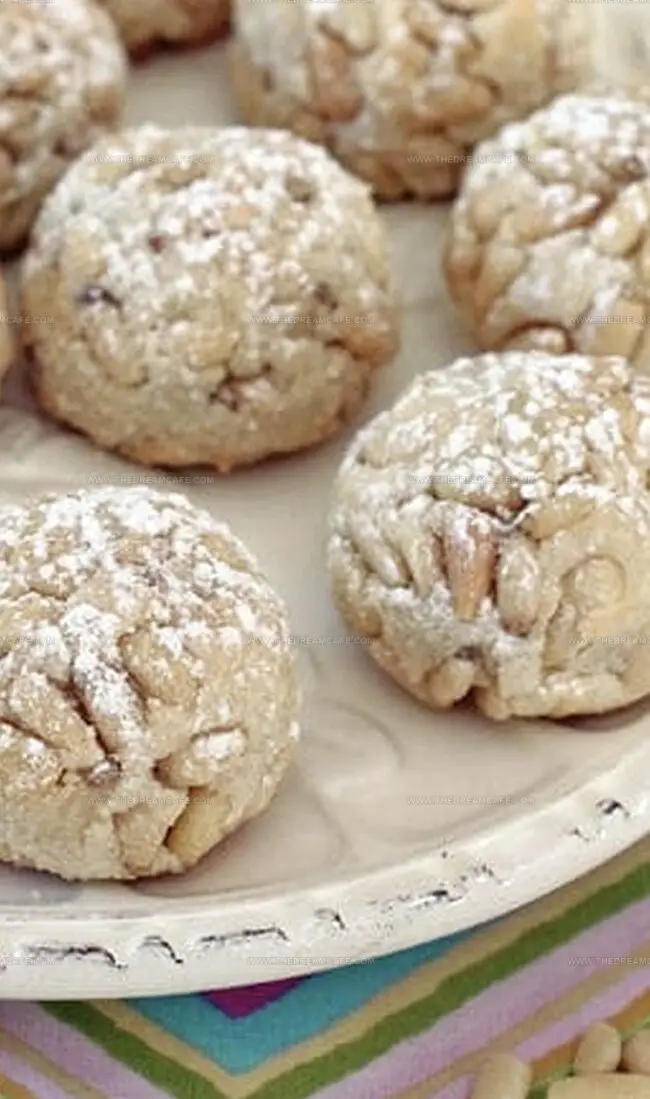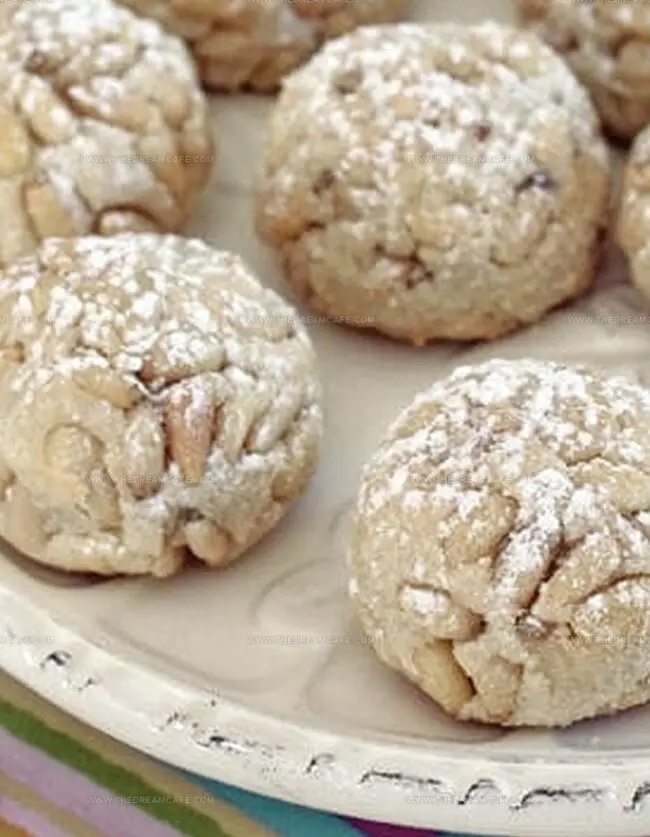Quick & Sweet Italian Pignoli Cookies Recipe You’ll Love
Delectable Italian pignoli cookies represent a sublime fusion of nutty sophistication and Mediterranean culinary artistry.
These delicate confections boast an irresistible almond-based composition that melts effortlessly on your tongue.
Crafted with precision, pignoli cookies showcase a remarkable balance between soft, dense interiors and crisp, golden exteriors studded with fragrant pine nuts.
Their gluten-free nature makes them a versatile treat for diverse dietary preferences.
Exceptional baking techniques refine simple ingredients into elegant morsels that capture the essence of traditional Italian dessert craftsmanship.
Each cookie promises a sensory journey through rich, concentrated flavors that dance between sweetness and nuttiness.
Prepare to embark on a delightful gastronomic adventure that celebrates simplicity and sophistication.
Why Italian Pignoli Cookies Are a Pine Nut Lover’s Dream
Ingredients for Traditional Italian Pignoli Cookies
Base Ingredients:Binding and Flavor Ingredients:Coating and Garnish Ingredients:How to Make Italian Pignoli Cookies at Home
Step 1: Prepare Baking Setup
Preheat oven to 325°F. Line 2 baking sheets with parchment paper or lightly grease them.
Step 2: Create Cookie Base
In a medium bowl, break almond paste into small pieces. Add:Mix ingredients until crumbly.
Step 3: Blend Wet Ingredients
Beat egg white into the mixture on low speed until smooth. Refrigerate mixture for 30 minutes.
Step 4: Prepare Pine Nut Coating
Spread pine nuts in a shallow dish for rolling cookies.
Step 5: Shape Cookie Dough
Remove chilled dough from refrigerator. Take tablespoon-sized portions and roll into smooth balls.
Step 6: Coat Cookies With Pine Nuts
Gently roll each dough ball in pine nuts, pressing lightly to ensure nuts stick. Place cookies 2 inches apart on prepared baking sheets.
Step 7: Bake Cookies
Bake cookies for 20 minutes for softer texture, or 22-24 minutes for firmer cookies.
Step 8: Cool Cookies
Let cookies rest on baking pans for 5 minutes. Transfer to wire racks and cool completely.
Step 9: Finish and Store
Dust cookies lightly with confectioners’ sugar if desired. Store in airtight container in cool, dry place for up to 1 week.
Pro Tips for Italian Pignoli Cookies That Melt in Your Mouth
How to Store and Reheat Italian Pignoli Cookies Without Losing Texture
What Pairs Well with Italian Pignoli Cookies
Italian Pignoli Cookies with a Twist: New Takes to Try
Print
Italian Pignoli Cookies Recipe
- Total Time: 49 minutes
- Yield: 12 1x
Description
Pine nut cookies from Italy sparkle with almond paste richness and delicate sweetness. Crisp exterior and chewy center invite you to savor these traditional Mediterranean delights in one perfect, memorable bite.
Ingredients
Main Ingredients:
- 1 cup almond paste
- 1 large egg white
- 1 ¼ cups pine nuts (pignoli) (about 7 ¼ ounces)
- ¼ cup almond flour (approximately 1 ¼ ounces)
Sweeteners and Seasonings:
- ¼ ounce granulated sugar
- ¼ cup granulated sugar
- 1 pinch of salt (equivalent to about ¼ teaspoon)
Flavor Enhancers:
- ½ teaspoon vanilla extract
- ½ teaspoon almond extract
Finishing Ingredient:
- Confectioners’ sugar for dusting
Instructions
- Preheat the oven to 325°F (163°C) and line two baking sheets with parchment paper or lightly grease them to prevent sticking.
- In a medium mixing bowl, crumble the almond paste into small pieces and combine with granulated sugar, salt, vanilla extract, almond extract, and almond flour until the mixture becomes coarse and crumbly.
- Gradually add the egg white to the mixture, beating on low speed until the batter becomes smooth and uniform in texture.
- Refrigerate the dough for approximately 30 minutes to firm up and make it easier to handle.
- While the dough chills, spread the pine nuts evenly in a shallow dish, preparing them for coating the cookie balls.
- Remove the chilled dough from the refrigerator and scoop out tablespoon-sized portions, gently rolling each into a smooth ball.
- Carefully roll each dough ball in the pine nuts, applying light pressure to ensure the nuts adhere completely to the surface of the cookie.
- Arrange the pine nut-coated cookies on the prepared baking sheets, spacing them about 2 inches apart to allow for slight spreading during baking.
- Bake the cookies for 20-24 minutes, adjusting the time depending on your preference for softer or crispier texture – 20 minutes for a softer cookie, 22-24 minutes for a firmer result.
- After baking, let the cookies rest on the baking sheets for 5 minutes to slightly cool and set their structure.
- Transfer the cookies to wire cooling racks and allow them to cool completely to room temperature.
- Once cooled, optionally dust the cookies with a light coating of confectioners’ sugar for added sweetness and presentation.
- Store the finished pignoli cookies in an airtight container in a cool, dry place for up to one week to maintain their freshness and texture.
Notes
- Pine nuts bring authentic Italian flavor and delightful crunch to these delicate almond-based cookies.
- Chilling the dough helps prevent spreading and ensures a perfect round shape during baking.
- Gentle rolling technique creates uniform cookies that look professionally handcrafted.
- Almond paste provides rich, intense nutty undertones that make these treats truly special.
- Minimal ingredients guarantee a classic, traditional dessert that celebrates simplicity and elegance.
- Prep Time: 25 minutes
- Cook Time: 24 minutes
- Category: Desserts
- Method: Baking
- Cuisine: Italian
Nutrition
- Serving Size: 12
- Calories: 180 kcal
- Sugar: 4g
- Sodium: 45mg
- Fat: 15g
- Saturated Fat: 1.5g
- Unsaturated Fat: 13.5g
- Trans Fat: 0g
- Carbohydrates: 9g
- Fiber: 1g
- Protein: 6g
- Cholesterol: <1mg




Julian Park
Co-Founder, Cuisine Researcher & Food Culture Writer
Expertise
Education
The Institute of Culinary Education (ICE), Los Angeles, CA
Julian Park is a natural storyteller at The Dream Café who blends hands-on culinary experience with a passion for exploring global food traditions. A graduate of The Institute of Culinary Education in Los Angeles, Julian combines professional technique with a love for cultural discovery, diving into how dishes reflect heritage, migration, and identity.
His work spans everything from in-depth cuisine guides to reflections on everyday meals around the world. With a curious palate and a journal always close by, Julian helps readers connect with food in a way that feels so insightful and personal.